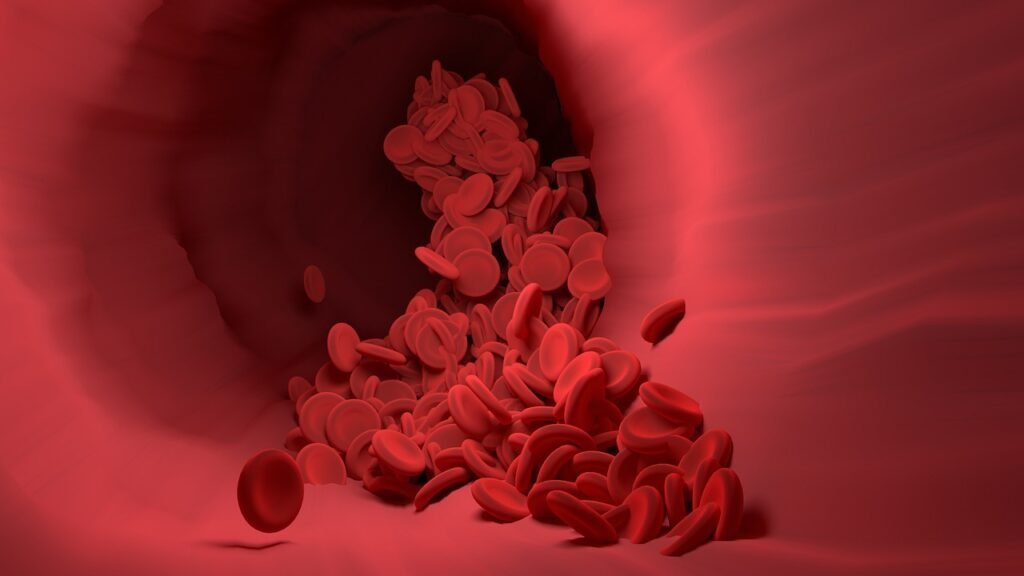Scientists Identify a New Blood Group After 50 Years in 2024-2025
Table of Contents
The Significance of Blood Groups in Medicine
Blood groups are fundamental in the field of medicine, particularly in areas concerning blood transfusions and organ transplants. The categorization of blood types is based on the presence or absence of specific antigens on the surface of red blood cells. The most widely recognized blood group system, the ABO system, classifies blood into four groups: A, B, AB, and O. Additionally, the Rh factor, indicating the presence of the D antigen, further complicates compatibility, leading to eight primary blood types in total.
The importance of understanding blood groups cannot be overstated. In transfusion medicine, compatibility between the donor’s and recipient’s blood is crucial to prevent hemolytic reactions, which can be life-threatening. Administering mismatched blood can elicit an immune response, resulting in the destruction of the transfused red blood cells. Consequently, careful testing for blood type and cross-matching is standard practice in clinical settings.
Moreover, the significance extends to organ transplants, where compatibility between donor and recipient blood types is essential to reduce the risk of transplant rejection. Studies show that patients with similar blood types have better outcomes following transplants, making blood group compatibility a critical factor in transplant success. As the understanding of immunology and blood science evolves, researchers are continually uncovering the intricate relationships between blood types and various health conditions.
Historically, the study of blood groups has illuminated numerous aspects of human genetics and biology. Since the discovery of the ABO blood group system over a century ago, ongoing research has unveiled additional blood types. The recent identification of a new blood group after five decades signifies a monumental advancement in this field, potentially leading to more refined blood transfusion practices and superior patient outcomes.
The Journey to Discovering a New Bloyears od Group
Over the past 50 years, the pursuit of understanding human blood groups has witnessed remarkable scientific endeavors and breakthroughs. The journey towards the identification of a new blood group began in the early 1970s when researchers first recognized irregularities in blood transfusion complications, prompting a deeper investigation into blood group antigens. Studies during this period initially focused on the well-established ABO and Rh blood groups while revealing sporadic cases of patients who exhibited atypical antigen profiles not fitting into existing classifications.
As the decades progressed, significant advancements in genetic research and immunology emerged, enhancing our understanding of the complex nature of blood groups. Throughout the 1980s and 1990s, scientists developed innovative techniques such as polymerase chain reaction (PCR) and DNA sequencing, which played pivotal roles in identifying unique blood group alleles. These advancements allowed researchers to approach blood group classification with a renewed perspective, facilitating a more in-depth exploration of previously unidentified antigens.

The turn of the millennium saw collaborative projects involving multiple research institutions and international teams, each contributing data and findings. Noteworthy studies highlighted the existence of rare blood group antigens and encouraged further exploration into their genetic foundations. The collaborative nature of these efforts brought together a diverse pool of knowledge, innovations, and technological resources, reinforcing the idea that collective efforts in research can yield significant developments in our understanding of human biology.
Challenges persisted along the way, including varying genetic backgrounds across populations, ethical considerations in studying rare blood types, and the difficulty of recruiting participants for research. However, research groups remained steadfast in their commitment to resolving these issues. Their perseverance culminated recently in the identification of a new blood group, representing a major milestone in transfusion medicine and providing hope for improved patient outcomes in the future.
Implications of the New Blood Group on Healthcare
The recent identification of a new blood group has significant implications for various aspects of healthcare, specifically in transfusion medicine, blood donation, and organ transplantation. As healthcare professionals navigate the complexities of blood type compatibility, the introduction of an additional blood type may transform existing protocols and practices. Prior to this discovery, misalignments in transfusion compatibility often led to serious complications, including adverse reactions or insufficient supply during emergencies. The recognition of a new blood group can potentially mitigate these complications, thereby improving patient outcomes through a more comprehensive understanding of blood type interactions.
In transfusion medicine, the newly discovered blood group may necessitate revisions of current databases and compatibility charts. Blood banks may need to adjust their inventory management strategies to account for this new classification, ensuring that healthcare providers have access to a wider variety of compatible blood products. The implications extend beyond mere availability; ensuring proper matching can increase the success rates of transfusions, ultimately enhancing overall patient safety. Furthermore, this discovery could inspire new studies aimed at elucidating the immunological mechanisms behind blood group interactions, creating a stronger foundation for transfusion practices.
Additionally, the novel blood type may play a crucial role in organ transplantation. Enhanced compatibility testing can improve matching between donors and recipients, thereby reducing the risk of organ rejection. The healthcare community may observe a need for enhanced screening protocols that incorporate this new blood group, leading to a paradigm shift in transplantation practices. Future research is likely to focus on developing sophisticated methodologies for compatibility testing, which could further refine the criteria used in both transfusion and transplantation scenarios. This discovery not only offers opportunities for improved clinical outcomes but may also stimulate broader advancements in the field of hematology and immunology.
What’s Next? Future Directions in Blood Group Research

The identification of a new blood group signifies a pivotal advancement in medical science, prompting the scientific community to explore various avenues for future research. One key direction involves delving into the genetic factors influencing blood group classification. Understanding the genetic basis of this newly discovered blood group could uncover critical insights into inheritance patterns and variations within populations. Such studies might also illuminate why certain blood groups are more prevalent in specific ethnic groups, thus enhancing our grasp of human genetics.
Besides genetic studies, the advent of this new blood group may foster the development of innovative medical technologies. Research teams might focus on creating diagnostic tools that can accurately identify this and other blood groups, ensuring that transfusion practices are as safe and efficient as possible. These advancements could mitigate risks associated with blood transfusions and significantly improve patient outcomes. Furthermore, the integration of this new classification into existing medical databases will be essential, requiring collaborative efforts among clinicians and researchers to ensure accurate and widespread adoption.
Conclusion
Public awareness of blood donation is another critical area of focus. As new blood groups come to light, it is imperative to educate the public about their significance, particularly regarding the need for donations from diverse populations. Increased awareness can encourage more individuals to participate in blood drives, ultimately helping hospitals maintain adequate blood stocks. In addition to this, ongoing research into related medical fields, such as immunology and hematology, will become increasingly relevant as the implications of this discovery unfold. By systematically integrating new knowledge into broader medical practices, the evolution of blood group classification will continue to enhance patient care and save lives.


